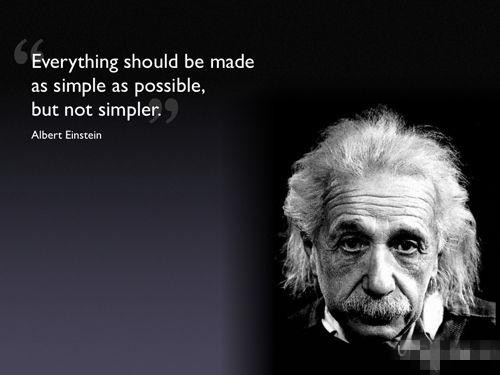(单词翻译:单击)
But the landmark event—the dawn of a new age—came in 1905, when there appeared in the German physics journal Annalen der Physik a series of papers by a young Swiss bureaucrat who had no university affiliation, no access to a laboratory, and the regular use of no library greater than that of the national patent office in Bern, where he was employed as a technical examiner third class. (An application to be promoted to technical examiner second class had recently been rejected.)
但是,划时代意义的事件——一个新时代的黎明——要到1905年才发生。当时,德国的物理学杂志《物理学年鉴》发表了一系列论文,作者是一位年轻的瑞士职员。他没有上过大学,没有用过实验室,通常跑的也只是伯尔尼国家专利局的小小图书馆。他是专利局的三级技术审查员。(他申请提升为二级审查员,但遭到了拒绝。)
His name was Albert Einstein, and in that one eventful year he submitted to Annalen der Physik five papers, of which three, according to C. P. Snow, “were among the greatest in the history of physics”—one examining the photoelectric effect by means of Planck’s new quantum theory, one on the behavior of small particles in suspension (what is known as Brownian motion), and one outlining a special theory of relativity.
他的名字叫阿尔伯特·爱因斯坦。在那个重要的一年,他向《物理学年鉴》递交了五篇论文,用C.P.斯诺的话来说,其中三篇“称得上是物理学史上最伟大的作品”——一篇使用普朗克刚刚提出的量子理论审视光电效应,一篇论述悬浮小粒子的状况(即现在所谓的布朗运动),一篇概述了狭义相对论。
The first won its author a Nobel Prize and explained the nature of light (and also helped to make television possible, among other things). 3 The second provided proof that atoms do indeed exist—a fact that had, surprisingly, been in some dispute. The third merely changed the world.
第一篇解释了光的性质(还促使许多事情成为可能,其中包括电视),为作者赢得了一个诺贝尔奖。第二篇提供了证据,证明原子确实存在——令人吃惊的是,这个事实过去一直存在一些争议。第三篇完全改变了世界。


